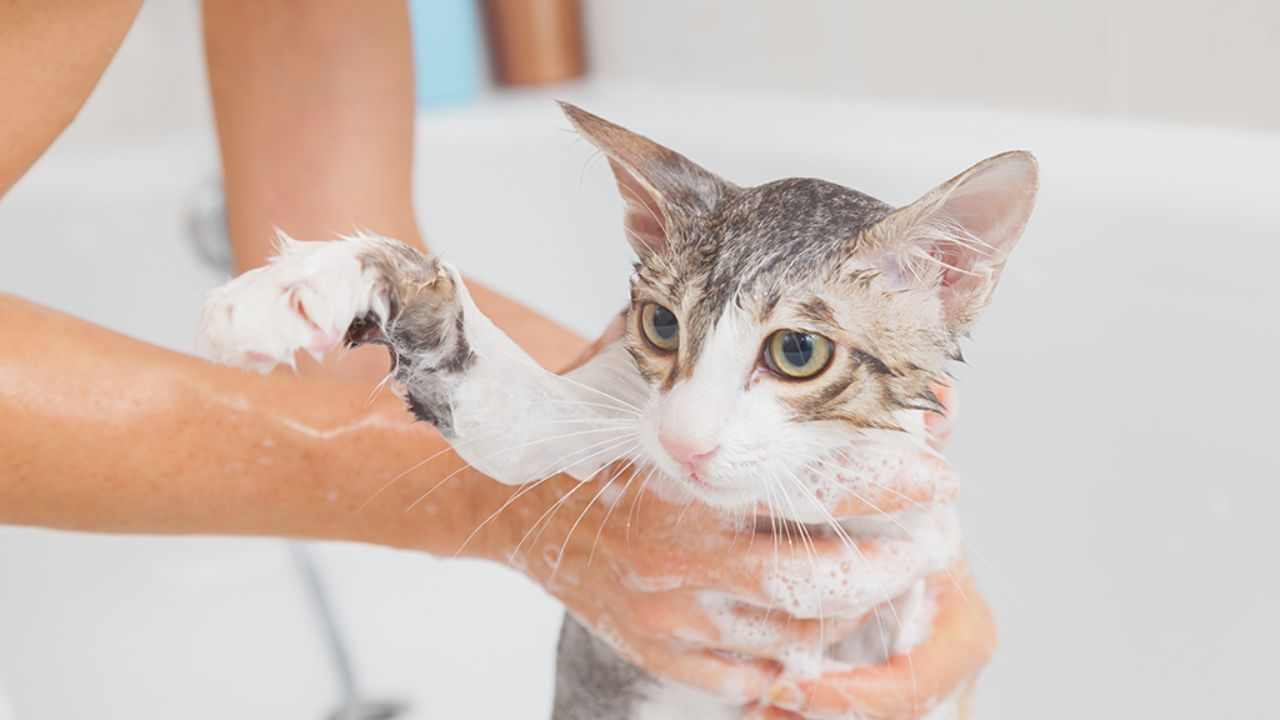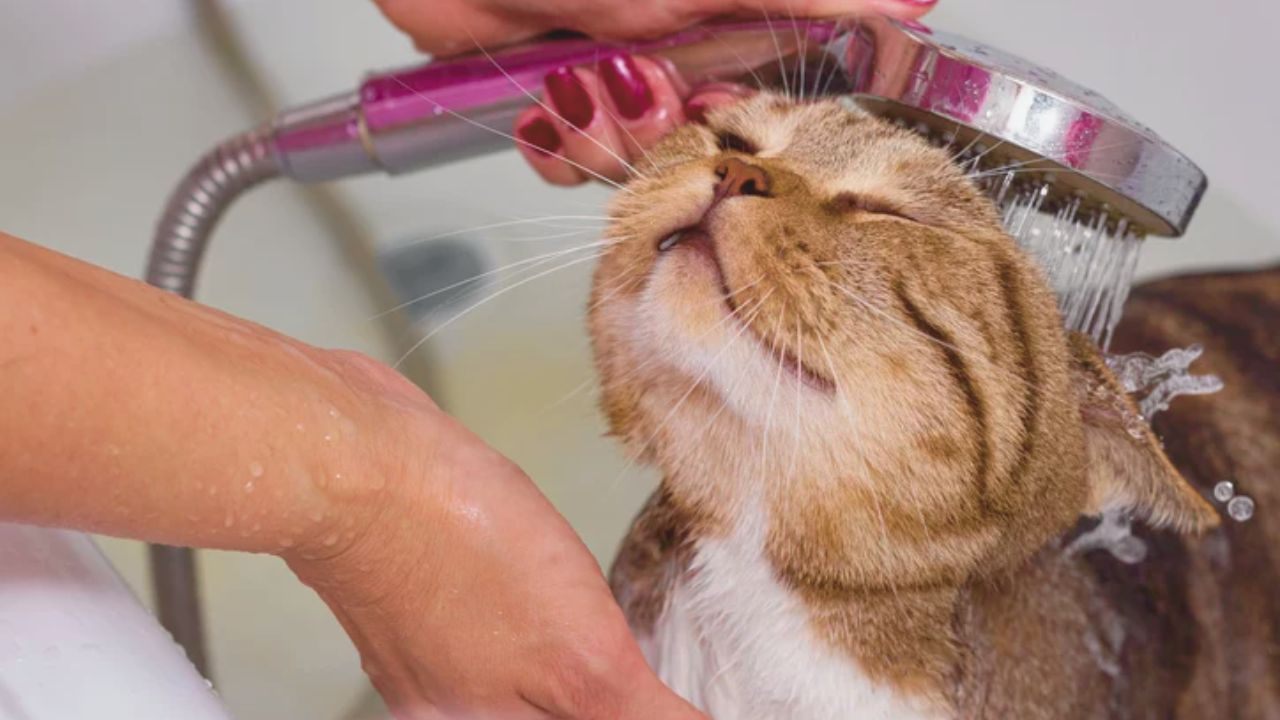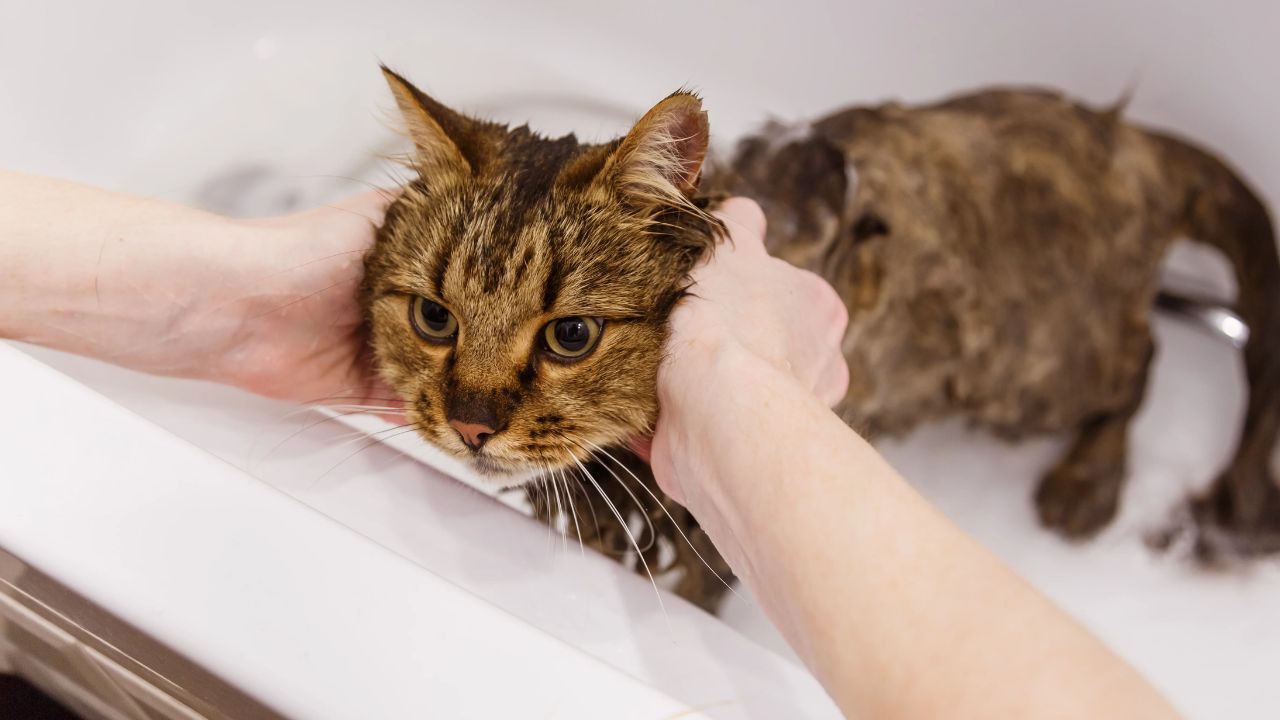If you have a cat, you already know how much they dislike water. While some cats may be the exception and might enjoy the water, most of the time, they despise it. This can become a problem when you want to bathe your cat.
Bathing and grooming your cat is a stressful event for both you as the owner and the cat itself. This is why learning how to bathe your cat properly is important. It helps reduce their anxiety and makes you a better pet owner by taking care of your cat's needs.
If you want to learn more about how to bathe a cat, check out this complete tutorial and guide.

Why Do You Need to Bathe Your Cat?
Many cats do not require to be bathed and groomed. Oftentimes, they can take care of themselves properly. They can groom themselves by simply licking which also helps keep the natural oils of their fur and skin intact.

Grooming them often can remove these natural oils that can degrade their skin integrity and quality. The best time to bathe your cat is when there are things on their skin that you don't want them to ingest.
Since cats lick to groom themselves, you want to remove these substances from their fur as soon as possible.
Additionally, you should also look at your cat's skin to see if there are infections.
How Often Should You Bathe Your Cat?
Cats are quite hygienic animals and rarely get themselves into a mess. And even if they do, they also know how to clean themselves up.
Many people want to bathe their cat every month but they don't need to.
You should only bathe your cat as necessary or in situations where there is matting or if your cat has a very foul smell.
How to Bathe Your Cat
There are a lot of areas in your home where you can bathe your cat. Never bathe your cat outside where the temperature can be too cold or hot.

It is best that you go for an indoor location such as your bathroom or kitchen. You can use the sink for smaller cats and the bathtub for bigger ones.
The benefit of sinks is that the cat is placed in a compact space so there is not much room for them to move around, which makes it easier for you to constrict them from thrashing.
Gather the Necessary Supplies
The next thing that you need to do is to gather the necessary supplies near you. Make sure that they are all within reach so that you don't have to walk away from your shivering cat and risk letting them run away from you.
Choose a shampoo that is specifically made for cats. These shampoos are formulated for cats so they are safe for their skin. Many of these shampoos even help with removing grease, dirt, and allergens, and retain moisture in their skin.
You'll also need an ear cleaner, a lot of treats to feed your cat while you bathe them, a towel, a mat, cotton balls, hypoallergenic wipes, and a blow dryer.
What to Do Before You Bathe Your Cat
Before you begin pouring water over your cat, there are a few things you need to do first. Trim your cat's claws first before you even start.
Cats can get defensive if they are stressed and you might end up getting scratches all over you if you don't do this first. Try to brush their coat before you bathe them as well.
This will remove a lot of extra fur that can get in the way of washing your cat's entire body. It also makes it easier for you to clean your cat and make the bathing process a lot faster and easier.
Also read: How to Easily Get a Free Sample of Food for Your Cat
Holding Your Cat
Grooming your cat takes a lot of skill and patience, especially if this is the first time for your cat. The way you hold your cat during the entire bathing process is crucial.
The best way to hold your cat is by cupping the neck area but make sure not to put too much pressure that you're choking your pet. Place just enough pressure so that your cat will know that you're holding him and that he is safe.
You also get control over your cat's movements and can put pressure on the chest area when he starts to move around during the bath. Try to do this before you place your cat into the sink to see how he reacts.
Bathing Your Cat
Once you have all the supplies, it is time to bathe your cat. Place the cat into the sink or bathtub and turn on the water. You can also let the cat acclimate to the surroundings first before you turn on the water.
Make sure that you slowly turn on the water so that it does not scare your cat and make it jump around the sink. Use lukewarm water and make sure that it gets through the fur, especially if you have a cat that has a thick layer of fur.
Run the water up until the cat's neck only and never let it wash the face. Lather the entire body with shampoo and massage thoroughly before rinsing. Use the wipes to wipe off the cat's face and make sure that remove all the gunk on the face, especially below the eyes.
Drying Off Your Cat
Once you're done, use the towel to dry off your cat. Just like when you were bathing your cat, massage the towel thoroughly to remove any excess water that can get trapped inside the fur.
Trapped moisture can cause infection, especially when you have a cat that has thick fur. It can become very difficult to spot as it takes some time before you can see it due to the cat's fur.
You can then use the blow dryer to dry off your cat. Your cat might not like the sound from the blow dryer, so always give it treats or you can cover their ears with a hoodie-like cloth.
Brushing Your Cat
After drying off, brush your cat's fur once again. This removes all the excess fur, and if your cat is shedding, this will help remove all the fur faster and save you time from cleaning your house from the fur.
Clean your cat's ears by using the ear cleaner. You can pour the solution directly into their ear and then use a cotton pad to clean the ear or pour the solution into a cotton pad and wipe the inside of your cat's ear. After that, shave your cat's paws as this prevents them from slipping.
Brush your cat one more time and you're done. Give your cat one final treat before you let your cat go to play.
Tips for Keeping Your Cat Calm During the Bath
Keeping your cat calm during the entire session is the best way to successfully bathe your cat.

The calmer your cat, the better and happier it will be for both of you.
Nobody wants to deal with the ravage of an angry cat so here are some tips for keeping your cat calm during the bath.
Keep Yourself Calm
First, it's important to stay calm. Stress can be very contagious and animals can immediately sense that you are stressed hence the reason why they are also stressed.
Make sure that you practice deep breathing and calm yourself before you bathe your cat. You can even put some relaxing music on as you prepare the things that you need so you can stay calm.
You might be worried that your cat might not like the bath but keeping a calm mood can help a lot.
Provide as Many Treats as Possible
If this is the first time that you are bathing your cat, it might be a stressful event for your pet, thus it will associate such activity as something stressful for the rest of its life.
Make sure that you offer plenty of treats so that your cat will think that this is a rewarding experience. Offer treats as you bathe your cat and after to ensure that the entire experience is rewarding for the cat.
You can also provide praises for the cat so it also associates those words with a reward or a relaxing experience.
Conclusion
Cats are great at grooming and taking care of themselves but there are certain instances that you'll need to bathe your cat. Make sure that you give your cat the proper care it deserves by learning how to properly bathe your cat.






